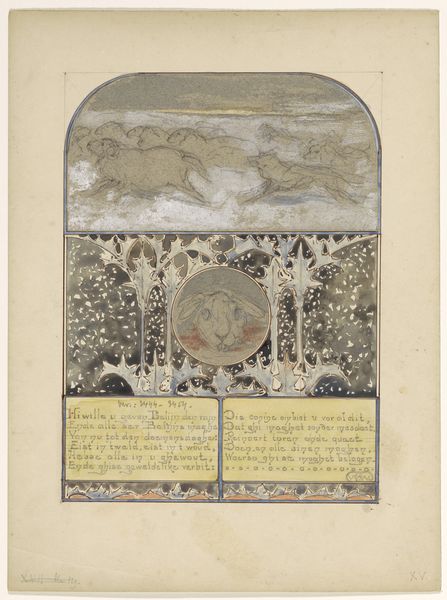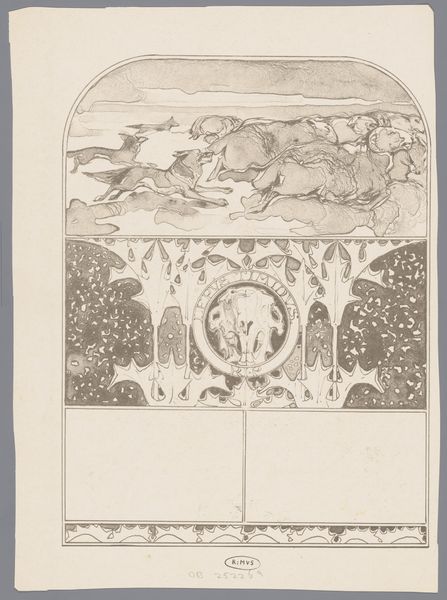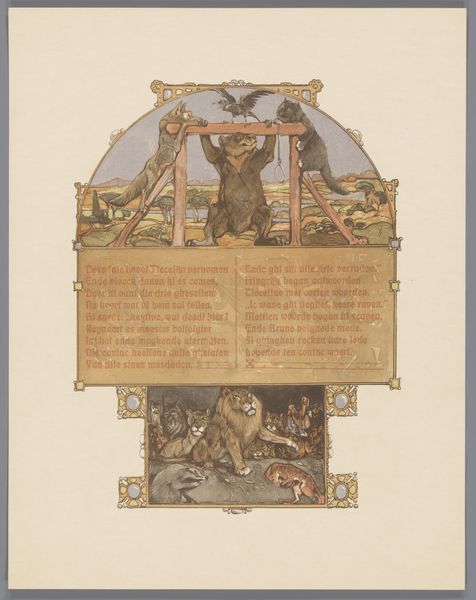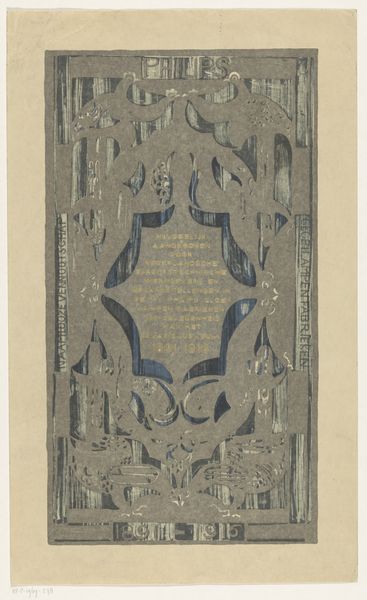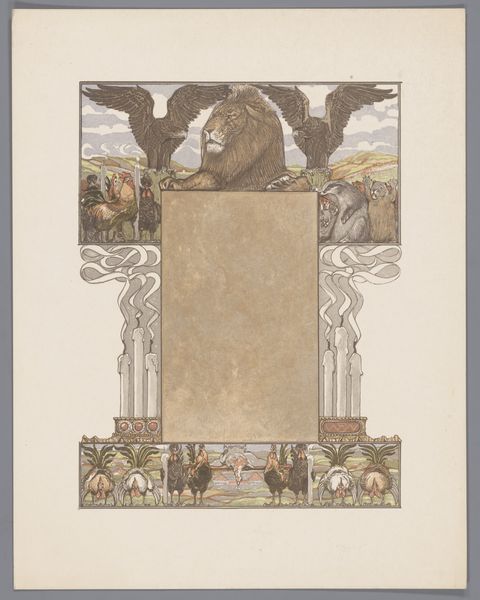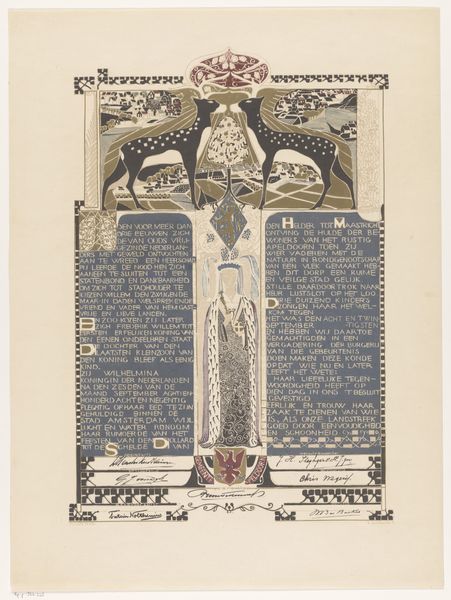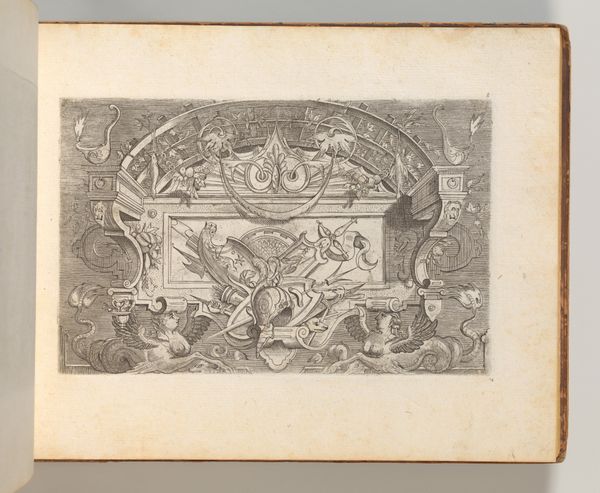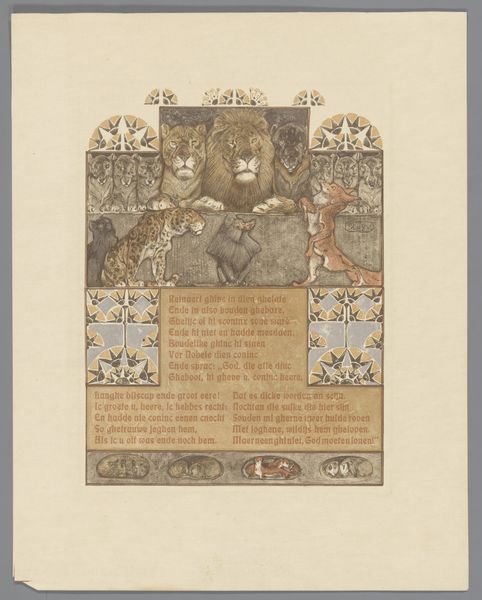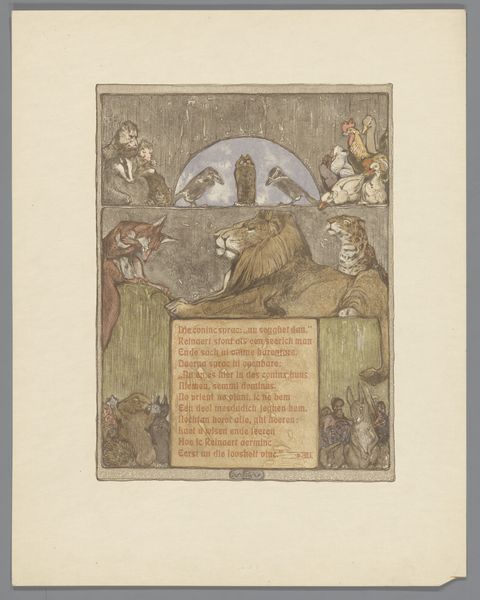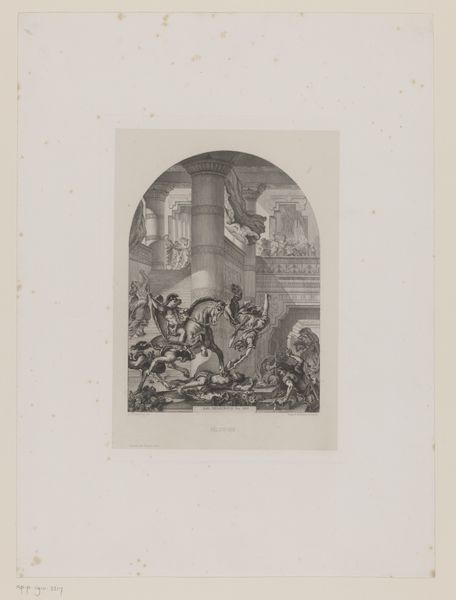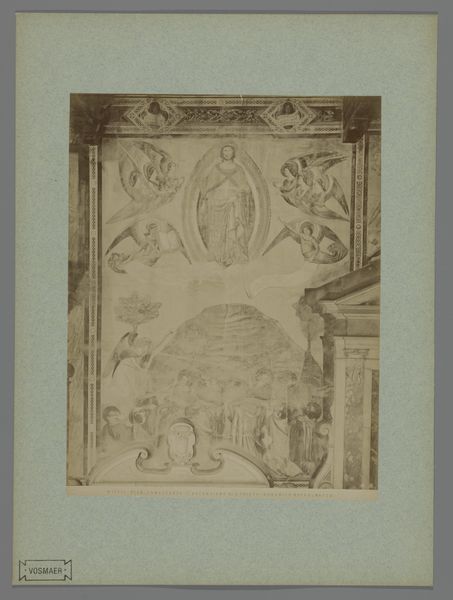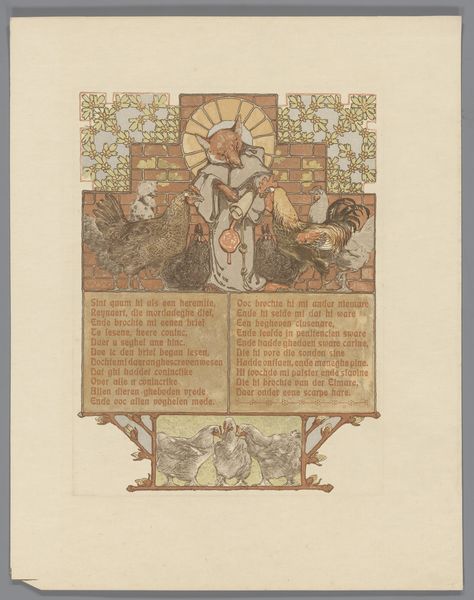
drawing, watercolor
#
drawing
#
art-nouveau
#
landscape
#
watercolor
#
symbolism
#
watercolour illustration
#
watercolor
Dimensions: height 330 mm, width 260 mm
Copyright: Rijks Museum: Open Domain
Curator: Looking at this artwork, titled "Roedel wolven jagend op schapen," or "Pack of wolves hunting sheep," made around 1910, one is struck by its unique, illustrative style. Bernard Willem Wierink rendered this image using watercolor and drawing techniques, creating an evocative and somewhat unsettling scene. Editor: Unsettling is the word! The color palette, predominantly grays and muted browns, adds to the bleakness. The wolves are fierce, but almost stylized, like characters in a dark fable, certainly speaking to predation and perhaps even some societal imbalances during that period. What strikes me the most is how decorative yet menacing it feels. Curator: Absolutely. Wierink worked in a time when Art Nouveau and Symbolism were influential, and you see that blending of aesthetics here. The hunt is positioned at the top of the piece like a decorative scene over a medieval doorway, with intricate text panels below. It raises questions about the role of visual art to depict, perhaps, cautionary tales or allegorical interpretations of reality. Editor: And what about the almost totem-like depiction of a skull or mask at the center of the artwork. This feels intentional and could represent a multitude of anxieties at play in early 20th century Europe. From agrarian life, social unrest, all the way to burgeoning existential threats felt at the eve of the great wars. It's more than decorative. I’d even call it foreboding. Curator: I can appreciate that point of view. Its symbolism feels deliberately layered; is it merely the hunter versus hunted, or a representation of some class struggle or the decline of pastoral innocence as industry took hold? Editor: Exactly! This era felt the pressures of modern anxieties around urbanization, and a fading aristocracy. "Wolves" could also represent societal evils exploiting the "sheep," the common populace. And in terms of institutional history, one could ponder how Wierink, positioning himself within symbolist circles, chose to visually protest this all with watercolors! Curator: Indeed, it shows how he leveraged his artistic training against the backdrop of complex sociopolitical shifts, challenging us to dissect beyond the visual into layers of social commentaries, rendered exquisitely. Editor: For me, "Roedel wolven jagend op schapen," becomes less of an art piece and more of an embodied statement from that time; it is a muted roar capturing a period teetering between worlds!
Comments
No comments
Be the first to comment and join the conversation on the ultimate creative platform.
